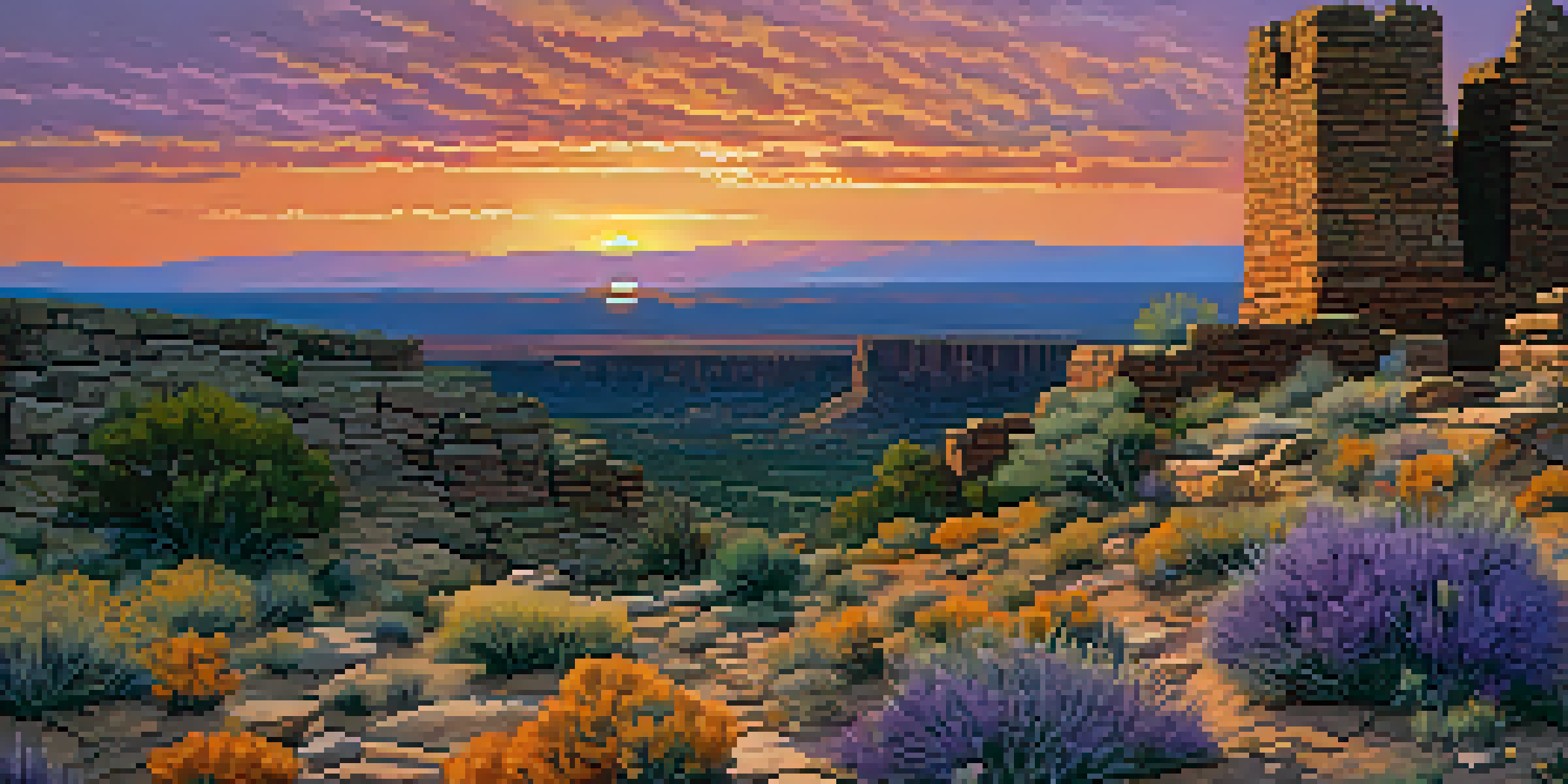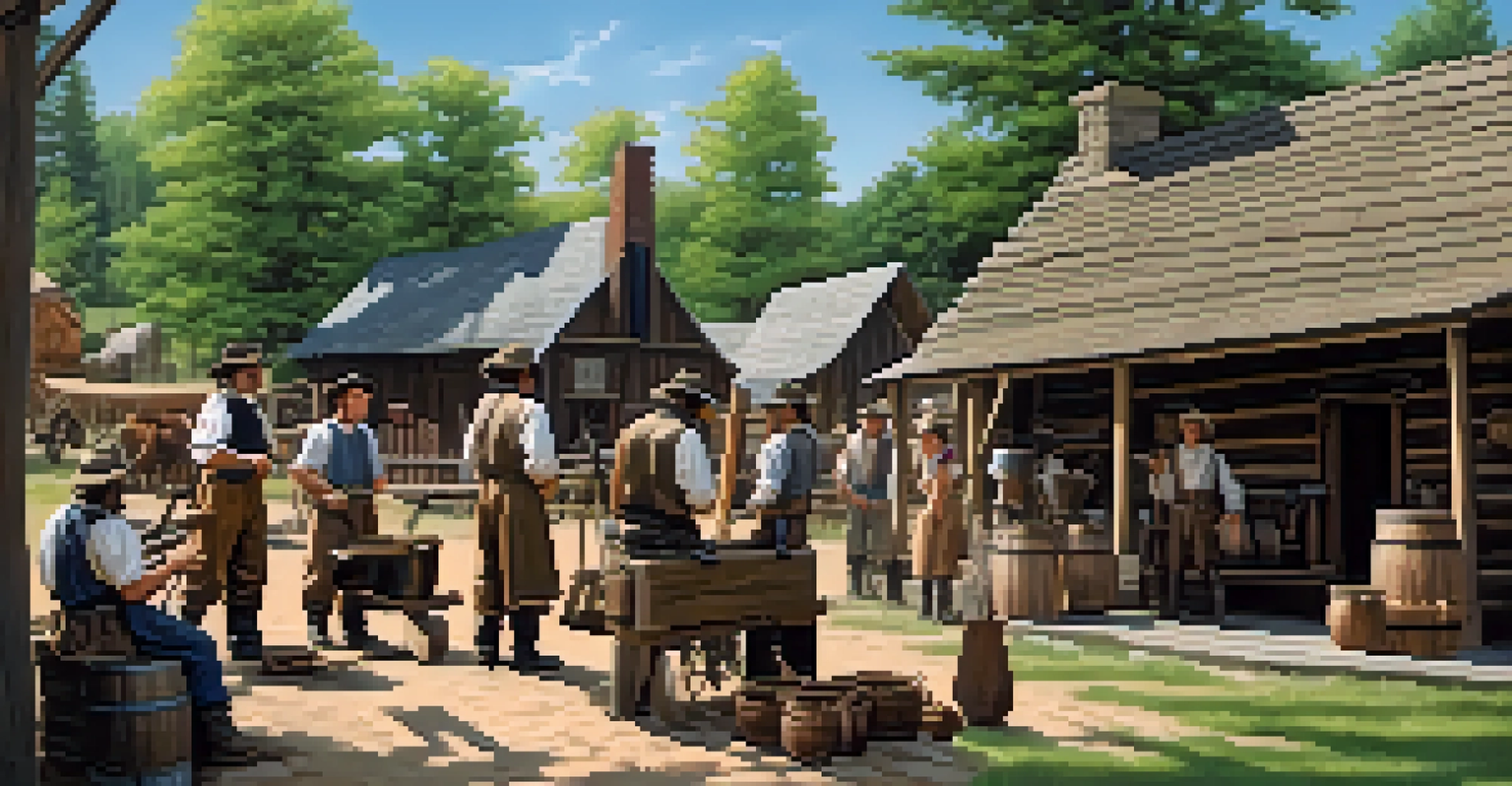Utah's Historic Sites: A Journey Through Time and Culture

The Importance of Utah's Historic Sites
Utah's historic sites offer a unique glimpse into the past, showcasing the rich tapestry of cultures that have shaped the state. From Native American heritage to pioneer settlements, these sites are a testament to resilience and adaptation. Exploring these locations not only provides educational insights but also fosters a deeper appreciation for Utah's diverse history.
The past is never dead. It's not even past.
Each historic site tells a story—one that connects the present to the past. For instance, the ancient rock art at the Nine Mile Canyon reveals the spiritual and everyday lives of the Fremont people. By visiting these sites, you engage with history in a tangible way, allowing for a personal connection to the narratives that define the region.
Moreover, these sites are crucial for preserving local history and culture. They serve as reminders of the challenges faced and the triumphs achieved, encouraging future generations to learn from the past. So, whether you're a history buff or a casual traveler, Utah's historic sites offer something for everyone.
Exploring the Ancient Puebloans at Hovenweep
Hovenweep National Monument is a stunning representation of Ancient Puebloan architecture, featuring well-preserved stone structures that date back over 700 years. Nestled in the canyons along the Utah-Colorado border, this site showcases the ingenuity of the Puebloans who thrived here. The unique designs of the towers and kivas reflect their deep connection to the land and the community.

Visitors can wander through the remnants of these ancient buildings, marveling at the craftsmanship and understanding the lifestyle of those who once called this place home. It's a powerful experience to stand where history happened, imagining the vibrant life that filled these now-silent structures. The surrounding landscape adds to the experience, with its breathtaking views contrasting the stark beauty of the ruins.
Explore Utah's Diverse History
Utah's historic sites showcase a rich tapestry of cultures, from Native American heritage to pioneer settlements, offering educational insights and a deeper appreciation for the state's past.
Hovenweep not only highlights the architectural prowess of the Puebloans but also serves as a reminder of the importance of preserving cultural heritage. By visiting and supporting such sites, we help ensure that these stories and traditions are passed down to future generations.
The Pioneer Spirit at This is the Place Heritage Park
This is the Place Heritage Park is where the pioneer spirit of Utah comes alive. Nestled in Salt Lake City, this living history museum encapsulates the journey of Mormon settlers who arrived in the mid-1800s. As you stroll through the park, you'll encounter costumed interpreters who bring history to life, sharing tales of perseverance and community.
History is not a burden on the memory but an illumination of the soul.
The park features replica homes, schools, and shops from the pioneer era, allowing visitors to step back in time. Engaging in hands-on activities, like blacksmithing or making butter, offers a taste of life as it was over a century ago. It's not just about observing; it's about experiencing history in a way that makes it feel relevant and personal.
Moreover, the park stands as a tribute to the diverse cultures that have contributed to Utah's development. While it highlights the Mormon pioneer story, it also acknowledges the indigenous peoples and other groups who have played significant roles in the region's history. This multifaceted approach enriches the visitor experience and fosters a broader understanding of Utah's past.
The Historic Charm of Park City
Park City is not only known for its world-class skiing but also for its rich mining history that is evident in its charming streets. Once a bustling silver mining town in the late 1800s, Park City has preserved many of its historic buildings, creating a delightful blend of past and present. As you walk along Main Street, you'll encounter unique shops, galleries, and restaurants housed in these historic structures.
The Park City Museum offers a fascinating glimpse into the town's mining heritage, with exhibits that detail the life of miners and the impact of the silver rush. Visitors can explore artifacts, photographs, and interactive displays that tell the story of this vibrant community. It's a wonderful way to understand how the town transformed from a mining hub to a modern ski resort.
Preserve Cultural Heritage
Visiting and supporting historic sites like Hovenweep and Temple Square helps preserve the stories and traditions of diverse communities for future generations.
In addition to its historical significance, Park City hosts various events that celebrate its culture, including the famous Sundance Film Festival. This combination of history, culture, and recreation makes Park City a must-visit destination for anyone looking to experience Utah's rich tapestry of life.
The Legacy of the Transcontinental Railroad
The completion of the Transcontinental Railroad in 1869 marked a pivotal moment in American history, and Utah played a crucial role in this monumental achievement. At Promontory Summit, where the golden spike was driven, visitors can explore the significance of this event and how it transformed the nation. The railroad not only connected East and West but also facilitated the movement of people, goods, and ideas.
Today, the Golden Spike National Historical Park commemorates this historic event, featuring reenactments and exhibits that bring the story to life. The park's visitor center provides insights into the challenges faced during construction and the diverse workforce that made it possible, including Chinese laborers who played a vital role. This rich history is a reminder of the collaborative spirit that drove progress.
Visiting the site allows you to reflect on how the railroad shaped Utah's development and contributed to the growth of the American West. It's a place where history enthusiasts can appreciate the engineering marvels of the past while recognizing their lasting impact on the present.
The Cultural Significance of Temple Square
Temple Square in Salt Lake City is a sacred space that holds immense cultural and historical significance for the Church of Jesus Christ of Latter-day Saints (LDS). This 10-acre complex is home to the iconic Salt Lake Temple, which has been a symbol of the faith since its completion in 1893. Visitors from around the world come to admire the stunning architecture and learn about the beliefs and practices of the LDS Church.
Beyond the temple, Temple Square features beautifully landscaped gardens, the Tabernacle, and the Church History Museum, each offering unique insights into the church's history and its role in shaping Utah's culture. The Tabernacle is particularly famous for its exceptional acoustics and the renowned Mormon Tabernacle Choir, which performs regularly, captivating audiences with its rich musical heritage.
Connect with the Past
Engaging with Utah's historic locations allows visitors to experience history in a personal way, creating meaningful connections to the narratives that define the region.
Temple Square is more than just a religious site; it represents a community that has played a pivotal role in Utah's history. Whether you’re interested in architecture, music, or simply want to learn about the local culture, Temple Square provides a welcoming space for everyone to explore and discover.
The Rich Heritage of Native American Sites
Utah is home to a wealth of Native American heritage sites that tell the stories of the indigenous peoples who have inhabited the region for thousands of years. Sites like the Bears Ears National Monument and the Ancient Puebloan dwellings at Mesa Verde offer visitors a chance to connect with the original stewards of the land. These locations are rich in cultural significance and provide valuable insights into the traditions and lifestyles of Native American tribes.
Visiting these sites allows for a deeper understanding of the rich history and cultural practices that continue to thrive today. Educational programs and guided tours often highlight native traditions, art, and spirituality, fostering a sense of respect and appreciation for these cultures. Engaging with local tribal members can provide additional perspectives, enriching the experience even further.

Preservation of these sites is crucial, as they are not only historical landmarks but also sacred spaces for many Native American communities. Supporting efforts to protect these areas ensures that future generations can learn from and honor the heritage that has shaped Utah's identity.
Conclusion: A Tapestry of Time and Culture
Utah's historic sites offer a captivating journey through time, weaving together stories of resilience, adaptation, and cultural richness. From ancient Puebloan structures to the remnants of pioneer life, each site invites visitors to engage with the past in meaningful ways. This rich tapestry of history not only shapes our understanding of Utah but also connects us to the broader narrative of America.
As you explore these historic locations, take the time to reflect on the diverse cultures and experiences that have contributed to the state’s identity. Each visit is an opportunity to appreciate the beauty of heritage and the lessons it imparts. It's a reminder that history is not just about what happened; it's about understanding who we are today.
In a world that often moves too quickly, visiting Utah's historic sites encourages us to pause and appreciate the stories that have come before us. So, pack your bags, grab your camera, and embark on a journey through Utah's rich history—it's a trip worth taking!